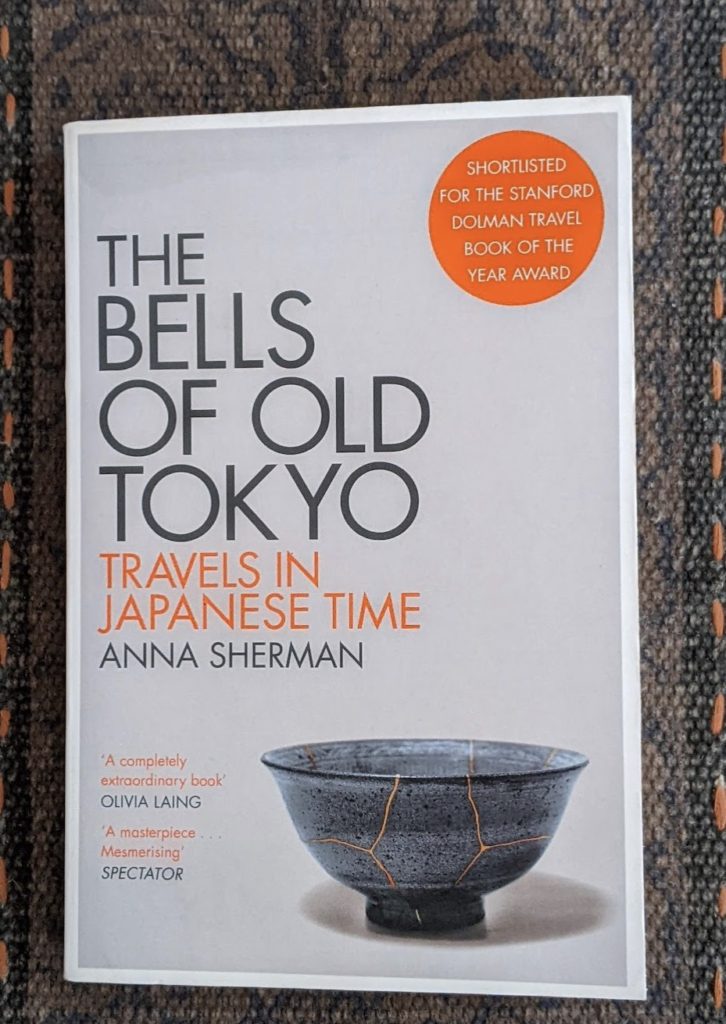Anna Sherman
I don’t know if I (sub)consciously avoided travelogues since 2020 because I would miss travel even more. But irrespective of that, there was something very poignant about the title itself, so I just had to pick it up. The good news is that it lived up to its promise. Anna Sherman does in this book what my favourite books about places do – let me travel in time and space.
The second part of the title – Meditations on Time and a City – gives a very good idea of the book’s focus. It talks about both the changes in Edo (before it came to be called Tokyo) with time, as well as its changing relationship with time itself. Like many other concepts, the Japanese have many words for time according to the context. Before its citizens started using manufactured devices to tell time, Edo’s time was told by the ringing of bells. At first, there were three, but by 1720, as the population touched a million, six more were added. And these bells are what the narrative follows.
With each, there are stories attached. Origin stories of the locality and the bell, and its journey through times good and bad – victories, wars, earthquakes, fires and so on. Nihonbashi – the Zero Point has its prison stories (prisoners let out during a fire would voluntarily return because they’d be found and killed otherwise). Asakusa has its beauty and murder story. Akasaka has the smallest bell, and love-hotel rooms which cater to any and all fetishes, with protocols that outsiders will find difficult to understand. Mejiro is home to the stone that honours the rebel samurai Chūya Marubashi. Nezu has a fascinating tale of clockmaking and how time shifted from personal to shared, and ‘the idea of time became mechanical.’ Ueno, where the battle in 1868 marked the end of the Tokugawa shogunate. A few months later, Edo would start making way for Tokyo. Where the bell-ringer knows he is probably the last of his kind. Kitasuna, where more than 700,000 bombs landed on 9-10 March 1945, and caused the deaths of more people than in Hiroshima and Nagasaki.
The book did a fantastic job of transporting me to the time and place. The words somehow gave me a visceral feeling of the place, the emotions of the different people who lived there, their daily existence, the events they have gone through, and sometimes I tended to see the place as a person too – changing, shifting, sometimes slowly and sometimes suddenly. It was like walking through the lanes. The one thing that I wish the book also had was maps so I could also get a better directional sense of where these places are.
I think, after this book, when I do visit Tokyo (Edo), I will see it through new eyes and old stories.


One thought on “The Bells of Old Tokyo”